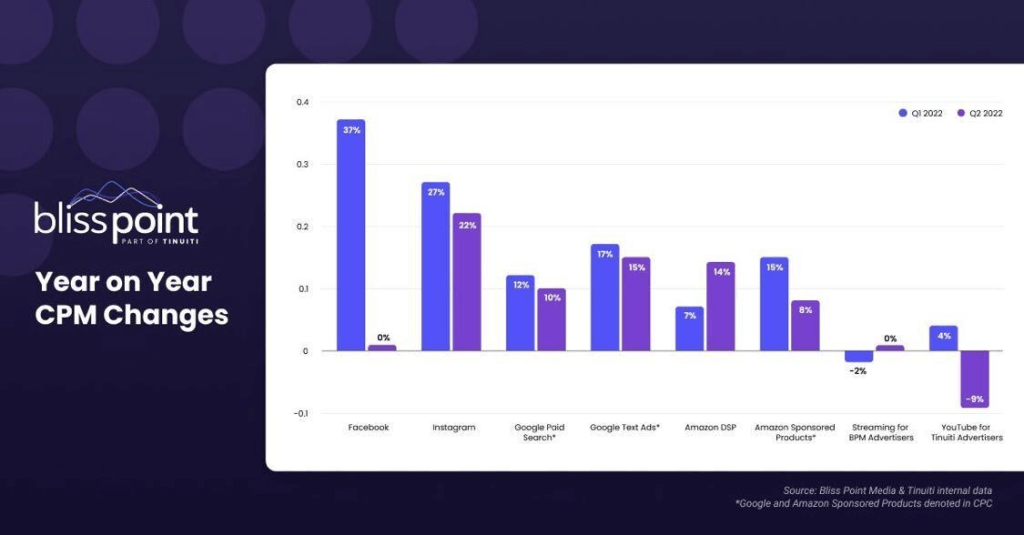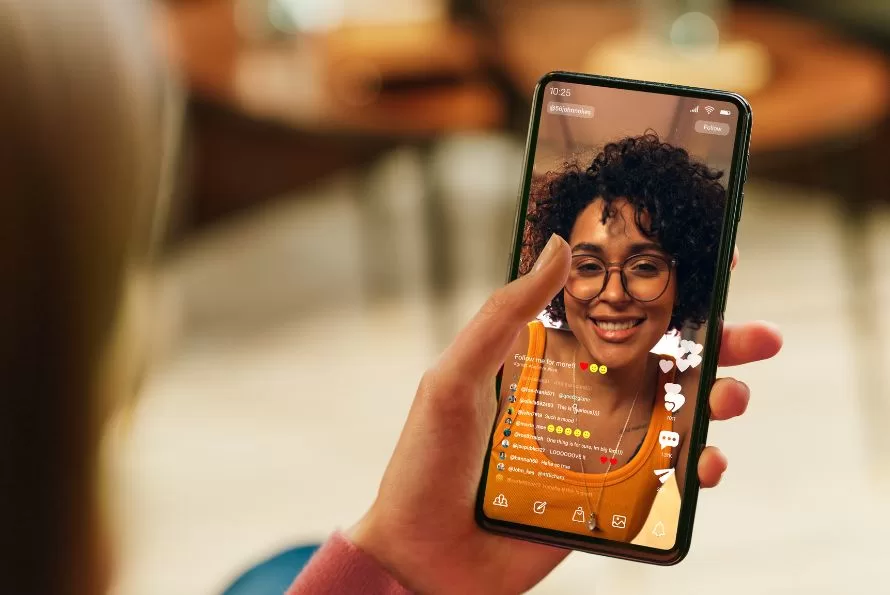

Catch Lost Conversions from Paid Marketing Channels and Boost ROI with Affiliate Marketing

It’s no secret that paid digital marketing channels have started to see a decline in return on investment (ROI), especially within the last couple of years. What does this mean for advertisers? Let’s take a deep dive into the different factors causing this ROI deviation, how leaning into a certain pay-per-performance channel can help boost brands’ returns, and tips for optimizing your affiliate channel to catch the high-intent conversions you might be losing out on with your paid marketing channels.
Why CPCs are increasing and ROI is declining for paid marketing
Most paid digital marketing channels—such as Facebook and Google—operate on a pay-per-click model. This makes these types of channels more top-of-funnel, with actions only tracked within the platform. Often times, the revenue being tracked in the platform isn’t being attributed to your source of truth, which is your backend analytics suite which tracks all your channel’s performance.
There are several different reasons ROI from paid marketing channels has dropped significantly due to the rise in CPCs. One reason is simply the level of competitiveness within these channels, especially now that most brands are leveraging a paid marketing strategy. As increasingly more brands invest in advertising goliaths—such as Facebook, Amazon and Google—the demand for these services has begun to exceed supply.
This imbalance of supply and demand has led to higher prices and slimmer profit margins for the brands that invest in these platforms. In other words, brands are flooding the marketplace in input-based channels such as paid search and paid social, triggering a sharp increase in prices as a result. However, brands aren’t seeing their customer acquisition return rise at anywhere close to the same rate.
Another factor contributing to the decline in ROI are the tracking issues around mobile advertising, due to the new iOS14.5 update that has made tracking app installs, performance, and in-app conversions more difficult to analyze. In particular, this has largely impacted paid social, as most users access social platforms on their phones. The overall revenue from paid social that’s attributed to brands’ source of truth is showing up as smaller (or even negative in some cases) than what they’re seeing in Facebook Ads, Pinterest and other paid social platforms. When that number is lower, it becomes harder for brands to justify pouring marketing budget into paid social channels that are showing minimal ROI.
In the graph below, from Bliss Point Media & Tinuiti, we can see that even though CPMs have decreased since last quarter, they are still increasing YoY:

Business Insider has also reported a startling increase in CPMs:
- Meta’s CPM increased 61% YoY
- TikTok’s CPM increased 185% YoY
- Google’s programmatic display CPMs increased 75% YoY
- Amazon’s sponsored product offering CPCs increased 14% YoY
Affiliate marketing is a cost-efficient solution to boost ROI
Ultimately, your affiliate return on investment is always going to be higher, as you only pay partners after they’ve delivered on a desired action—whether that’s sales, leads, new customers, etc. With affiliate marketing, you only pay for actual outcomes.
While a typical affiliate marketing return on ad spend (ROAS) for a retail program is often going to sit around 8:1, you’ll be lucky to see a 1:1 ROAS on a paid channel, like Facebook. The goals for an affiliate program and a paid program are going to be different, but from a purely economic standpoint, the affiliate channel is always going to be more efficient because of the way budget is used. Unlike paid marketing channels that focus strictly on top-of-funnel exposure, affiliate marketing offers full funnel coverage.
As a full-funnel solution, affiliate marketing can adapt to any type of marketing that is willing to payout on an action. Brands are able to run email, influencer, paid search and countless other types of marketing campaigns through an affiliate program.
With affiliate marketing, you can also leverage non-traditional partnerships (such as influencers) as a more efficient way to target your audience on various social platforms. Whereas traditional paid social has to set a daily budget that isn’t seeing the same ROI.
Overall, we’ve seen a much higher ROAS from our clients within the affiliate channel:
- Leesa returned their affiliate program to AP and saw a 200%+ ROAS increase
- Blenders achieved an exceptional 4059% ROAS increase with AP
- One mattress retailer saw 160% increase in ROAS with non-traditional SEM affiliates
- After just two months, a fitness brand increased their ROAS by 569% with one coupon partner
Enhance your tight marketing budget during a tough economy
The changing market and current inflation have led brands to look for safer options when it comes to budgeting their marketing dollars to cost-effectively boost performance. While no brand is going to pause or shut down their paid marketing channels—nor should you—it’s become increasingly important to be savvy with budget and lean into marketing channels that offer full-funnel support, high conversion rates, and lower CPCs.
This makes affiliate marketing not only a safe choice, but a smart one. By leveraging your affiliate channel, you can fill in the conversion gaps your paid marketing channels are missing. What’s going to really benefit brands in our current economy is having a fully optimized affiliate program to ensure that conversions are coming through in places that are higher intent.
You should always take a holistic look at your marketing channels—with affiliate marketing, you want to make sure your pay-per-performance channel isn’t overlapping or cannibalizing your paid channels, rather they should be complementing one another so that conversions aren’t being lost, and you’re lowering ROI wherever you can.
Optimize your affiliate channel to complement your paid marketing channels
Your affiliate marketing program can capture the conversions happening further down the funnel after they’ve been introduced via paid channels, but still need a final push to convert. In order to do this, you’ll need to optimize your affiliate program so that it’s working cohesively with your other paid marketing channels.
Here are three ways you can optimize your affiliate channel to do this:
- Implement copy that’s accurate throughout your marketing channels. If you’re going to promote a sale on your paid marketing channels, make sure that sale is also being promoted through your affiliate channel. It’s important to also use copy that ensures a consistent user journey from start to finish, regardless of which channel they end up on. This will lead to more conversions across the board.
- Keep CPCs from overall paid search down with TM+ affiliate partners. By leveraging a trademark plus (TM+) affiliate, you can supplement your internal search strategy on a performance basis. These types of affiliates can bid on additional keywords, such as those associated with competitors or other search engines, while also boosting brand visibility.
- Onboard the right affiliate partners for your program. Are you diversifying your affiliate program with partners that have proven conversion rates? Often times brands avoid certain types of partners due to outdated generalizations, but this would be a mistake, especially given our current economy and the worldwide inflation we’re seeing. Coupon, deal, and loyalty partners should be viewed as an integral part of your overall marketing strategy, as the ROAS from these partners is usually significantly higher. You want to capture the large number of consumers who are looking for the best deal or doing more research than just clicking on a Facebook ad and making a purchase. Appealing to an educated consumer who has multiple touchpoints in their customer journey is going to leverage both affiliate and paid marketing strategies to ultimately capture that conversion.
Ready to cost-efficiently increase your marketing ROI through outcome-based marketing? Let’s connect!
Author: Parker Moss







